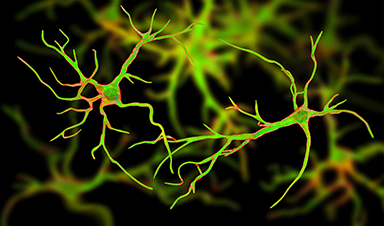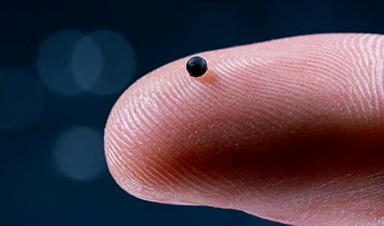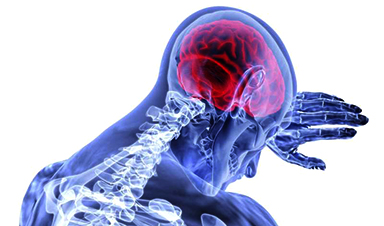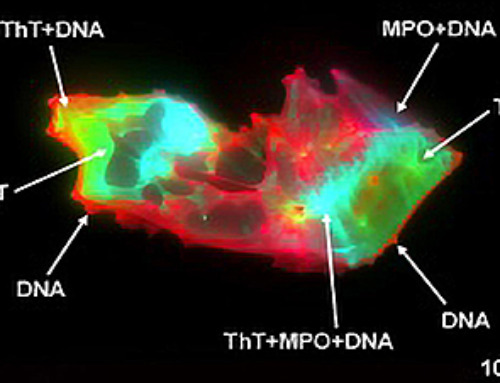Medical technologies such as electronic devices implanted or injected into the human body are the next growth area for hackers pursuing money or control of individual people. With nanotechnology implants already being used for some medical treatments, advances in their application could pose as great a cybersecurity threat as what faces the Internet of Things, experts say.
Security professionals have begun to confront the problem of biomechanical hacking. Two years ago, health care giant Johnson & Johnson warned that one type of its insulin pumps could be hacked. The company encouraged users to avoid employing the device’s remote-control feature and to program the pump to limit its maximum dose. And last year, the U.S. Food and Drug Administration ordered the recall of nearly half a million pacemakers over hacking fears. A firmware update was needed to patch security holes in the devices.
But these threats are relatively simple compared with the potential for malicious cyber activity within the human body. New biomechanical technologies coming into use are far more sophisticated, and far more vulnerable, than single-function devices such as pacemakers and insulin pumps. Medicine sits on the cusp of introducing nanosystems into the human body that could revolutionize treatment and recovery, according to health journals. These particles, which measure 10-9 microns, or 1 nanometer, will be able to perform a variety of functions, either singularly or in groups. But, as electronic devices, they could be hacked by outsiders.
These innovative nanoparticles are not being introduced with sufficient security, says Gregory Carpenter, a certified information security manager (CISM) and a self-described cyber imagineer. A former military intelligence and cyber expert with the U.S. Army and the National Security Agency, Carpenter has written several books and articles on technology and the cybersecurity threat. “[Biomechanical] security is probably the last thing to be put in place at a very high level,” he charges. “There is rudimentary security in several different deployments of that technology in some universities in the United States. But I would say the same level of security is not acknowledged as necessary in different places around the world because [advanced nanomedicine] is only in the research phase right now.
“As new nanoparticles come out, you’ll see autonomous processors in nanoparticles, which will be in contact with a client—a laptop, desktop computer or tablet that is going to be run by a server. So, there’s always a link, and if you can hack it, you can own it,” he declares.
Image Credit: Shutterstock
News This Week
Scientists Uncover Hidden Blood Pattern in Long COVID
Researchers found persistent microclot and NET structures in Long COVID blood that may explain long-lasting symptoms. Researchers examining Long COVID have identified a structural connection between circulating microclots and neutrophil extracellular traps (NETs). The [...]
This Cellular Trick Helps Cancer Spread, but Could Also Stop It
Groups of normal cbiells can sense far into their surroundings, helping explain cancer cell migration. Understanding this ability could lead to new ways to limit tumor spread. The tale of the princess and the [...]
New mRNA therapy targets drug-resistant pneumonia
Bacteria that multiply on surfaces are a major headache in health care when they gain a foothold on, for example, implants or in catheters. Researchers at Chalmers University of Technology in Sweden have found [...]
Current Heart Health Guidelines Are Failing To Catch a Deadly Genetic Killer
New research reveals that standard screening misses most people with a common inherited cholesterol disorder. A Mayo Clinic study reports that current genetic screening guidelines overlook most people who have familial hypercholesterolemia, an inherited disorder that [...]
Scientists Identify the Evolutionary “Purpose” of Consciousness
Summary: Researchers at Ruhr University Bochum explore why consciousness evolved and why different species developed it in distinct ways. By comparing humans with birds, they show that complex awareness may arise through different neural architectures yet [...]
Novel mRNA therapy curbs antibiotic-resistant infections in preclinical lung models
Researchers at the Icahn School of Medicine at Mount Sinai and collaborators have reported early success with a novel mRNA-based therapy designed to combat antibiotic-resistant bacteria. The findings, published in Nature Biotechnology, show that in [...]
New skin-permeable polymer delivers insulin without needles
A breakthrough zwitterionic polymer slips through the skin’s toughest barriers, carrying insulin deep into tissue and normalizing blood sugar, offering patients a painless alternative to daily injections. A recent study published in the journal Nature examines [...]
Multifunctional Nanogels: A Breakthrough in Antibacterial Strategies
Antibiotic resistance is a growing concern - from human health to crop survival. A new study successfully uses nanogels to target and almost entirely inhibit the bacteria P. Aeruginosa. Recently published in Angewandte Chemie, the study [...]
Nanoflowers rejuvenate old and damaged human cells by replacing their mitochondria
Biomedical researchers at Texas A&M University may have discovered a way to stop or even reverse the decline of cellular energy production—a finding that could have revolutionary effects across medicine. Dr. Akhilesh K. Gaharwar [...]
The Stunning New Push to Protect the Invisible 99% of Life
Scientists worldwide have joined forces to build the first-ever roadmap for conserving Earth’s vast invisible majority—microbes. Their new IUCN Specialist Group reframes conservation by elevating microbial life to the same urgency as plants and [...]
Scientists Find a Way to Help the Brain Clear Alzheimer’s Plaques Naturally
Scientists have discovered that the brain may have a built-in way to fight Alzheimer’s. By activating a protein called Sox9, researchers were able to switch on star-shaped brain cells known as astrocytes and turn them into [...]
Vision can be rebooted in adults with amblyopia, study suggests
Temporarily anesthetizing the retina briefly reverts the activity of the visual system to that observed in early development and enables growth of responses to the amblyopic eye, new research shows. In the common vision [...]
Ultrasound-activated Nanoparticles Kill Liver Cancer and Activate Immune System
A new ultrasound-guided nanotherapy wipes out liver tumors while training the immune system to keep them from coming back. The study, published in Nano Today, introduces a biodegradable nanoparticle system that combines sonodynamic therapy and cell [...]
Magnetic nanoparticles that successfully navigate complex blood vessels may be ready for clinical trials
Every year, 12 million people worldwide suffer a stroke; many die or are permanently impaired. Currently, drugs are administered to dissolve the thrombus that blocks the blood vessel. These drugs spread throughout the entire [...]
Reviving Exhausted T Cells Sparks Powerful Cancer Tumor Elimination
Scientists have discovered how tumors secretly drain the energy from T cells—the immune system’s main cancer fighters—and how blocking that process can bring them back to life. The team found that cancer cells use [...]
Very low LDL-cholesterol correlates to fewer heart problems after stroke
Brigham and Women's Hospital's TIMI Study Group reports that in patients with prior ischemic stroke, very low achieved LDL-cholesterol correlated with fewer major adverse cardiovascular events and fewer recurrent strokes, without an apparent increase [...]






















Leave A Comment